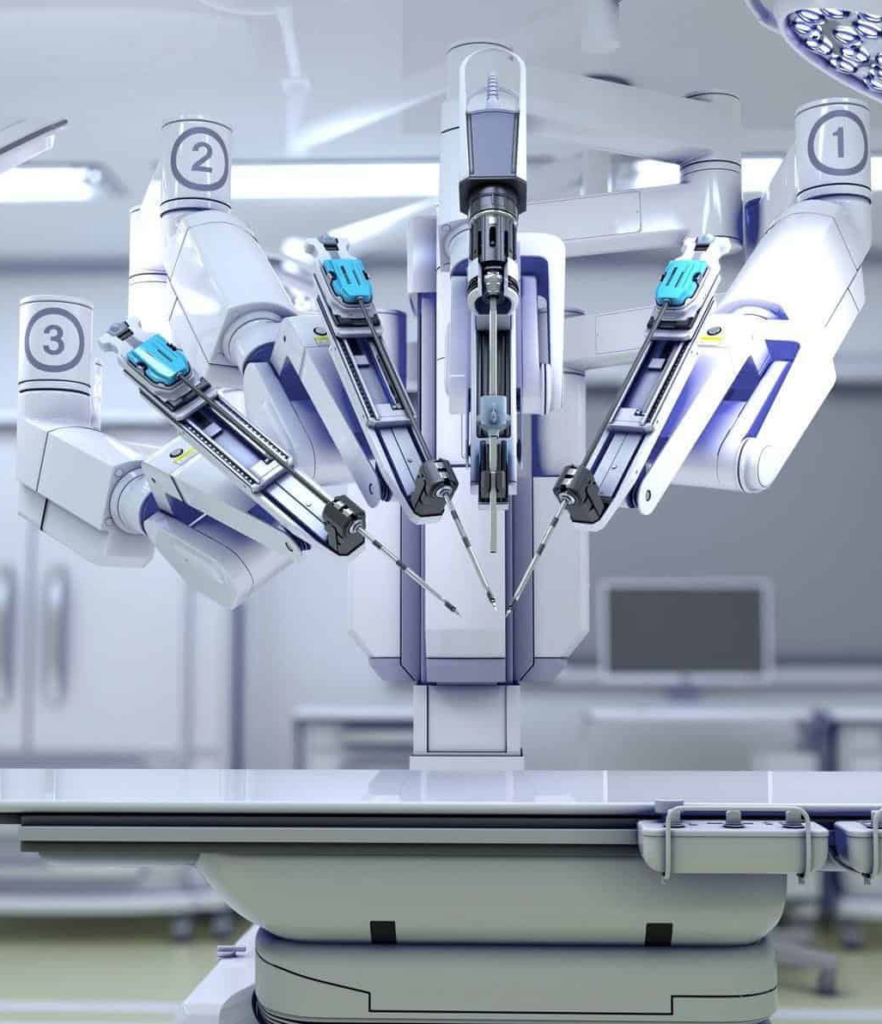Robotic surgery is changing the game in urological procedures, reducing pain, infection, and recovery time.
By Dr Samit Chaturvedi
The field of urology has earned its reputation as a super-specialty renowned for its enthusiastic embrace of continuous technological advancements. Throughout its history, from the initial development of cystoscopes and resectoscopes to the introduction of flexible ureteroscopies and groundbreaking laparoscopy, urologists have consistently positioned themselves at the forefront of innovation, eagerly adopting and skillfully applying cutting-edge surgical technologies. Robots in the Operating Room
The utilization of surgical robots, in particular, has overwhelmingly been spearheaded by the dexterous hands of urologists. Building upon the resounding triumph of robot-assisted laparoscopic prostatectomy in the 1990s, robotic surgery has progressively permeated various facets of urological procedures across the globe.
Robotic surgery, by nature, is inherently characterized by its minimally invasive approach. This salient attribute ushers in a plethora of benefits for patients, including diminished pain, reduced risk of infection, minimal blood loss, and inconspicuous scarring. Furthermore, the recuperative period for patients is significantly truncated, underscoring the expeditious nature of their recovery. The introduction of robotic arms, which deftly circumvent the inherent limitations of human wrists, engenders an environment conducive to more refined, precise, and efficient surgical movements.
The integration of three-dimensional imaging and endo-wrist technology into robotic systems bestows a heightened degree of surgical precision and furnishes substantial operational advantages over conventional laparoscopic procedures. This technology shines brightest in scenarios characterized by restricted, deep-seated operative fields, where intricate dissections and micro-suturing are prerequisites, such as in the context of intrapelvic anastomoses during kidney transplantation.

Robotic-assisted interventions have substantially improved the prospects of preserving nerve bundles and erectile function in radical prostatectomy, simultaneously curbing blood loss and minimizing margin positivity. These factors collectively culminate in a more favorable oncological and functional prognosis compared to non-robotic surgical approaches. In patients afflicted with renal tumors, robotic systems offer the distinct advantage of augmented visual acuity, facilitating superior tumor excision and precision in renorrhaphy, ultimately translating into improved patient outcomes.
Complex cases, including retroperitoneal lymph node dissection (RPLND), renal tumors with inferior vena cava (IVC) thrombus, and ilio-inguinal lymph node dissection, are executed with heightened proficiency and reduced morbidity through the expert utilization of robotic assistance.
Additionally, surgeons themselves derive immense benefit from robotic surgery, as it endows them with enhanced strength, dexterity, flexibility, control, and an unobstructed view of the operative field. Robotic surgery ergonomically enhances the experience for both surgeons and their assistants, facilitating comfort, heightened concentration, and the execution of intricate procedures that would otherwise be arduous or unfeasible through alternative methods.
Beyond the pioneering Da Vinci robotic system, a multitude of other robotic platforms, such as the HUGO robotic system by Medtronics, the Versius robotic system by CMR, and the S.S. Mantra robot, are surfacing, promising to elevate the versatility of surgical robots and drive cost reduction through heightened competition.
At Max Super-Specialty Hospital in Saket, we have long harnessed the potential of surgical robots, specifically the Da Vinci Xi and Versius systems, to extend the manifold advantages of precision surgery to our patients. Our repertoire of robotic surgeries encompasses a broad spectrum, including oncological cases, reconstructive procedures, and kidney transplantations. Some common robotic-assisted urological surgical procedures routinely undertaken at our facility include robotic radical/simple prostatectomy with pelvic lymph node dissection, robotic cystectomy with ileal conduit or neo-bladder reconstruction, robotic total or partial nephrectomy, robotic pyeloplasty, robotic nephroureterectomy, robotic adrenalectomy, robotic ureteric reimplantation with Boari flap, and vesico-vaginal fistula repair. Notably, we stand amongst the select few centers in the nation to have pioneered and successfully sustained a Robotic Kidney Transplantation program.

However, it is essential to acknowledge the primary limitation that has hitherto obscured the widespread adoption of robotic surgery: its exorbitant cost. Thankfully, the landscape is shifting, with a multitude of competing robotic platforms emerging, and the widening embrace of insurance coverage, rendering robotic surgery increasingly accessible and affordable.
The latest paradigm shift on the horizon is the integration of Artificial Intelligence (AI) into surgical procedures, marking a monumental juncture in the surgical treatment of patients. The fusion of AI and robotics promises to unlock an entirely new chapter in the annals of surgical innovation, infusing it with unprecedented possibilities and efficiencies.
As the Advanced Urology Institute, we steadfastly maintain the belief that surgical outcomes stand as a direct reflection of the experiential acumen and skill set of the surgeon, in conjunction with the collective prowess of the surgical team. We are proud to undertake hundreds of laparoscopic and robotic surgeries each year, consistently achieving laudable success rates in terms of efficacy, curative outcomes, and the amelioration of our patients’ overall quality of life.
(The author is Director – Uro-Oncology, Max Super Speciality Hospital, Saket, New Delhi)

Leave a Reply